There’s no doubt that technology has become an essential part of the lives of humans. Its contributions had been significant to the development of and service improvement in different industries today.
In the healthcare industry, for example, technology is continuously improving the way providers perform their duties to ensure their patients’ safety. In the related yet different field of pharmaceutics, machine-readable barcoding is currently used for efficient scanning and verification of ingredients involved in sterile and non-sterile preparations which can be outsourced to companies like Fagron Sterile Services. This results in improved quality of drug storage, distribution, dispensing, as well as the management of hospital records.
These are only a few of the contributions that technology has made in the field of healthcare. Every year, more technological inventions are made to help improve health quality.
Here’s a list of tech inventions that have dramatically shaped the healthcare industry to the way it’s known today.
Technologies That Are Helping To Achieve Safer Healthcare
There are several factors and circumstances when a patient’s life can still be at risk even while being treated or admitted to a facility. Health professionals are just humans prone to making mistakes. This is why scientists and inventors are looking for ways to make healthcare safer through some of these technological inventions:
Wearable Technology
Watches and wristbands have been transformed and are currently worn by patients to help doctors and other healthcare professionals in collecting data. This wearable technology is also widely used by many healthcare professionals in monitoring their patients.
When the wearables send alarming data that might put the patient’s life at risk, healthcare professionals are immediately informed, allowing them to take the corresponding action to save their patient’s lives.
Robotics Use For Surgery
Robotics are commonly used in minimally invasive surgery and procedures that are highly complicated or difficult to perform using a doctor’s bare hands. Robotics help healthcare professionals to be more precise with their actions because these machines have calculated control and flexibility.
When surgeons need to make smaller incisions, it’ll be hard for them to see the smallest details. This is a big problem as little mistakes can be fatal. Robotic surgery is making it possible for complex surgery to be conducted with ease.
Telemedicine Or Telehealth
Virtual consultation is now preferred by many patients instead of going to the hospital or doctor’s offices. Most patients find it safer as telemedicine doesn’t require them to go outside and interact with other people. For many, it minimizes the risk of acquiring a highly contagious infectious disease, particularly at this time of the pandemic.
Telehealth or telemedicine enables patients to receive care through the use of their gadgets, like mobile phones, tablets, and computers. Aside from the convenience and safety that it offers, it also allows healthcare professionals to give immediate diagnoses and recommendations.
Robotic Nurse Assistant
Most of the time, nurses get injured because of the need to move or lift a patient. Robotic nurse assistants are a new invention that prioritizes safety, not only for the patient but also for their assisting nurses.
There are different types of robotic nurse assistants. An example is a full robot that can move, lift, and set down a patient on its own. A robotics device, on the other hand, enables a health worker to lift a patient with strength and stability. Although with varying degrees of capabilities and skills, these tech inventions had made strides not only in improving the lives of patients but also in helping medical providers manage their workloads.
Mobile Drug References Applications
There are many instances that medical providers might need answers to medication information. Some of these questions deal with the medicine’s right dosage, pregnancy and breastfeeding safety, and side effects. To avoid misleading and misinforming patients through inaccurate information, medical healthcare needs to have reliable resources. Through the use of technology, these resources are made available at their fingertips.
Many drug reference apps can be downloaded on mobile devices. They come with many features, like drug database, guidelines, pill identifier, side effects database, and many others. Most of these apps provide easy-to-follow guidelines and straightforward information.
The only downside of these drug reference apps is that they require a paid subscription to have full access to their offered resources. However, if you think of how accuracy can ensure that your patients would be safer, then every penny spent on these apps is certainly going to be worth it.
Delivery Drones For Medical Samples And Supplies
Medical emergencies can be a matter of life and death. It can be extremely stressful on the part of medical providers knowing that lives can be saved if only medical samples can be tested earlier and medical supplies can be delivered on time.
Today, this is possible by using drones to deliver different samples, such as urine, tissues, and blood. Other deliveries include blood and medicines. Freight companies have started making drones as investments to help them deliver these essentials even to rural areas.
Electronic Prescribing Systems
Sometimes, errors are committed even when prescribing medications. This is dangerous as a wrong prescription can be fatal. To avoid this, the use of an electronic prescribing system can be implemented.
The electronic prescribing system replaces the traditional way of providing patient prescriptions through pen and paper. Using this system, prescriptions are created, transferred, and dispensed electronically.
Many benefits come with e-prescription for both healthcare providers and patients. For health practitioners, these could help them in reducing errors in transcriptions. In addition, it can also ensure that this information can be transmitted to the patients on time.
For patients, losing their prescription documents can be avoided. This can minimize the chances of them getting delayed treatment or asking for the wrong medication.
Final Thoughts
Technology has immensely contributed to the development of the healthcare industry. This is seen through inventions, like watches and wristbands, that can track a patient’s medical condition. Electronic prescribing systems and telemedicine have also been found beneficial by some patients.
On the other hand, robots used for surgeries and assisting nurses have positively impacted the lives of medical professionals. Lastly, drones are also utilized to ensure the timely analysis of medical samples and delivery of medical supplies.

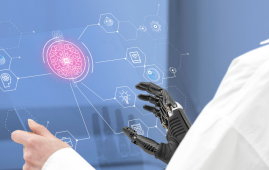
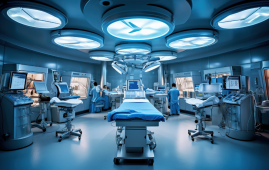

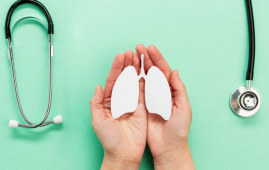
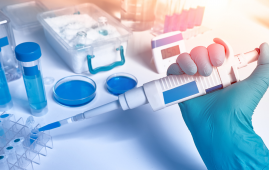




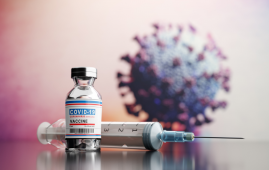
Leave a Comment